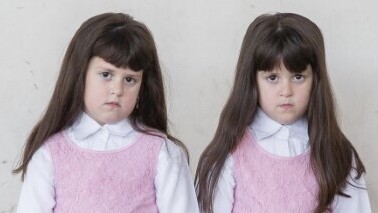
Couples Couples of identical twin girls dressed in identical clothes, standing in empty spaces, looking directly at the camera. These are the images of 15 of the works displayed in “Double”, the first solo exhibition by photographer Sagit Friedman-Hillel, which will open this week (March 4) at the Petah Tikva Museum of Art (curator: Reut Forster). The series has been filmed by Friedman-Hillel for about six years, during which she returns to the same pairs of identical twins and follows their maturation process. But this is not the only layer that exists in the series. Through the photographs, she deals with several other issues that accompany her throughout her artistic path – present and past, identity and blurring of identity, alienation, foreignness and more.
5 View the gallery
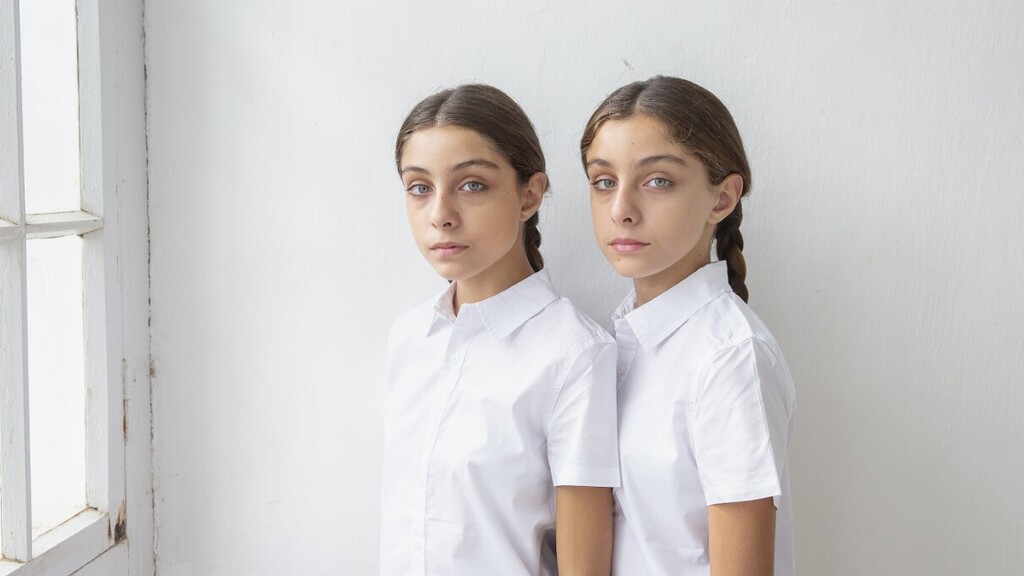

Nofar and Shani, from the exhibition “Double”
(Photo: Sagit Friedman-Hillel)
Friedman-Hillel, 51, began shooting professionally at a relatively late stage in her life, around the age of 40. “I shoot all my life,” she says. “But when I graduated from the army and was debating whether to study photography at Bezalel, I was terribly frightened. I was afraid I would not be good enough in my own eyes. So I went on to study art history and geography at the Hebrew University, and then did a master’s degree in urban planning at the Technion. And only around the age of 40 did I dare to tell myself that what I most want to do in life is take pictures. ” In the 11 years that have passed since then, Friedman-Hillel has been working in series format, in each of which she has invested long periods. “I always plan the next series in my head a few years before I start actually doing it,” she says. “Although I started filming the ‘Double’ series in 2015, it existed in a dream, in an idea, a few years earlier.”
Why exactly identical twins?
“This phenomenon has fascinated me for years. It is an extraordinary, unconventional, mesmerizing phenomenon. It is indeed a kind of anomaly of nature, medicine treats it as a ‘defect’ – but it is a miraculous defect. I am not a twin myself and I have no twin children, but the harmonious unit This hermetic has always fascinated me. It’s the strongest and deepest connection that exists between two human beings. Also difficulty and complexity – two entities born into the same shell, which sometimes erases the identity.This is a different personality that is forced on a uniform identity, which society often treats as one piece.
5 View the gallery
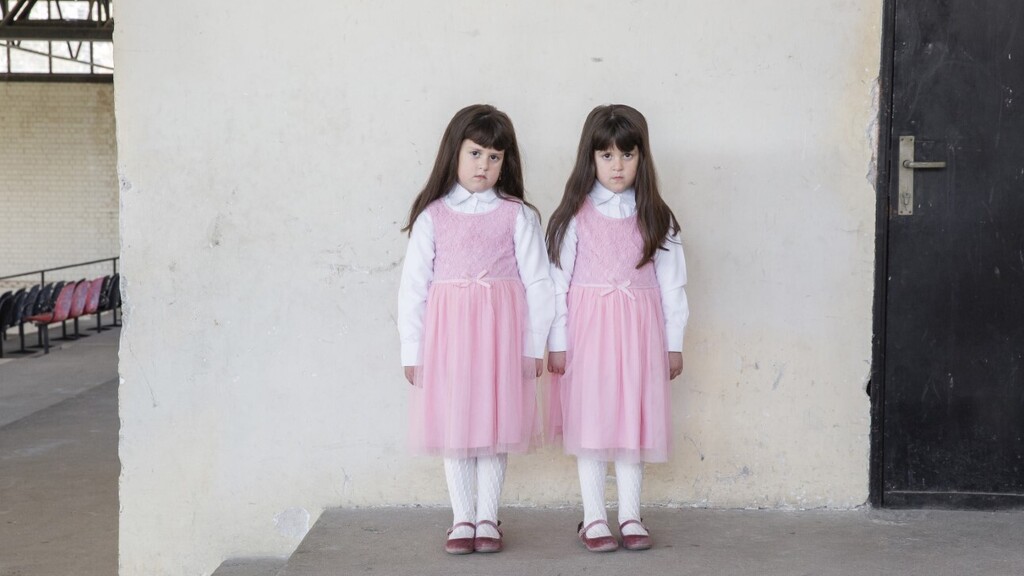

Esti and Paige, from the exhibition “Double”
(Photo: Sagit Friedman-Hillel)
“Through my photography I ask what it does to them. It is also reflected in the photography process itself: I always shoot on a single focus, and I will always have to choose someone to put the focus on. I of course do not betray it and the picture will not betray but it evokes I have a thought that if I as a photographer have to deal with this difficulty – what does it say about these twins’ dealings with the people around them and with society for the rest of their lives? Therefore, I always look for the differences within their imagination.Although I dress them in the same clothes, I look I’m even more interested in the difference that is expressed in their personality – in the different expression, in the way they hold the body. Precisely the fact that I dress them in the same outfit, which echoes a kind of duplication and emphasizes the absence of the individual “She’s the one who helps me discern each other’s different personalities.”
By the way, why are not male males identical?
“There are photographers who photograph themselves and there are photographers who photograph others, but I think any work of art is also a self-portrait. Apparently there is something that evokes in me empathy or resonates with my childhood. I choose in this series girls who are contemporary but dress them as if they lived many years ago. In clothes that look like they were taken from the early settlement period. I also put them in spaces that are decades old and thus I create some stagnation in time, I stop it in a way that the viewer may have to ask himself when the picture was taken. In my other series I like to move between several layers in time. To produce a hybrid between past and present. Maybe because these are worlds that I feel I walk around in a bit of a sense of alienation. I have some nostalgic longing for a world I never lived in. I was born in 1969, I did not live in the 50s or this period of early settlement, But the clothes for the twins – some of which I pick up and the rest I sew myself – I want them to identify as those taken from this period. “
5 View the gallery
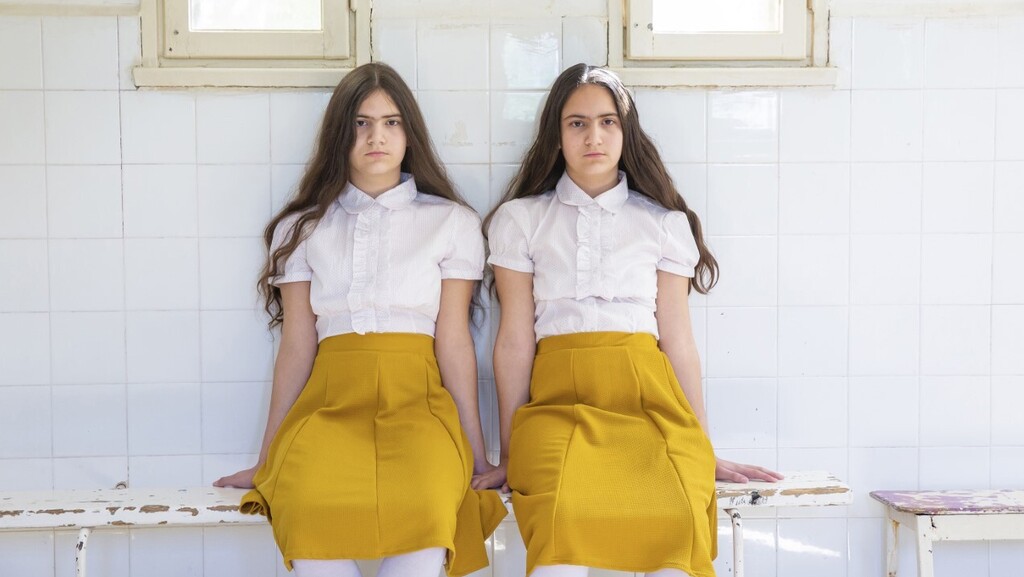

Ziv and Roni, from the exhibition “Double”
(Photo: Sagit Friedman-Hillel)
The locations where Friedman-Hillel photographs the twin couples is an important layer in the work, no less than the characters photographed in the works. “The twins are all photographed in historic institutional buildings, mostly on the verge of disappearing or remodeling or demolishing. Sometimes I take a picture of the place and want to return to it a year later, then realize the bulldozers have already caught up with me. That too is part of my urge to preserve the past. Usually in buildings that were used as ‘habitats’ for children – children’s homes in kibbutzim, boarding schools, youth villages, places where they grew up in a way that is different from a ‘regular’ house, basically without parents in the picture. This way I also deal with the issue of home, the essence of home for me. “The historic buildings serve as a backdrop and sometimes the building becomes the portrait itself. For example, in three works displayed in an exhibition that do not have figures of twins, but photographs of the space of the old orphanage in Jerusalem I traveled to with a woman who grew up an orphan.”
5 View the gallery
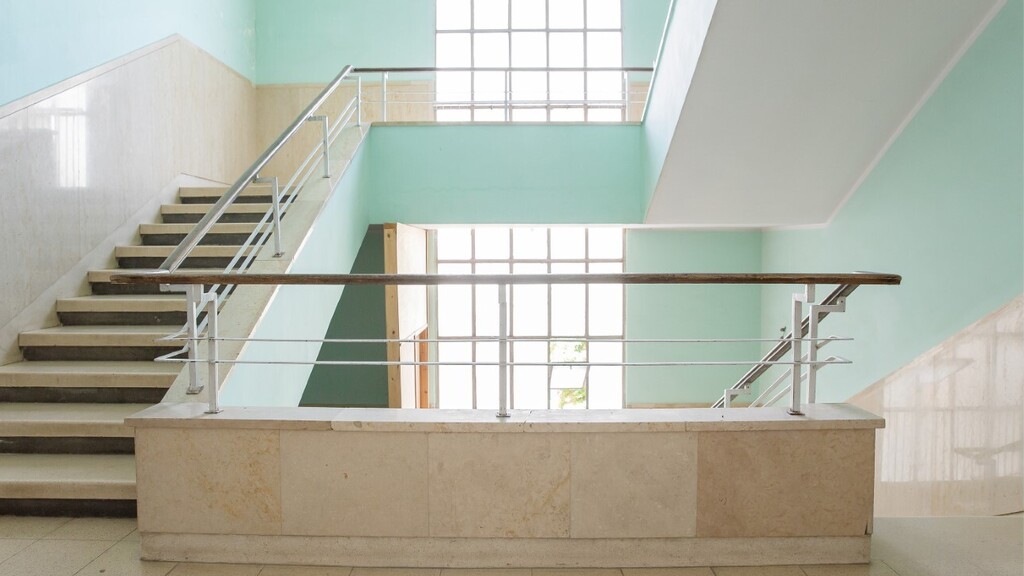

Staircase, from the exhibition “Double”
(Photo: Sagit Friedman-Hillel)
How do you locate the people being photographed?
“At first it was word of mouth. I can find them everywhere and I have already found pairs of twins in lots of places – on the street, on the train, in the toilets of the Design Museum in Holon, in a locker room in a clothing store. Later I posted on several groups of identical twins on Facebook. “I do a preparation meeting before the filming, usually at their house, I talk to them, meet the parents, check the chemistry between us. Then the meeting on the set is already the second meeting and they feel more comfortable.”
Are you looking for a specific type of look? Of personality?
“I’m looking for ones that I would be interested in following and coming back to again and again. The exhibition in Petah Tikva does show photographs of 15 different pairs of twins, but in this series I return to the same pairs again and again and follow their adolescence. I look for girls who have qualities. Temporality, with which I create a new world. “
Why choose girls and teenagers and not adult twins?
“I feel that photographing children and teenagers is a bit like reading in an open book. There is a certain modesty that is still visible. Over the years we put on a lot of masks, protective, and at this age there is something else that allows the personality to come out, they do not hide it. “Twins that I started photographing at the age of five, but I started most of them at a slightly older age, and already after a year you can see the change, that they are no longer what they were before.”
5 View the gallery
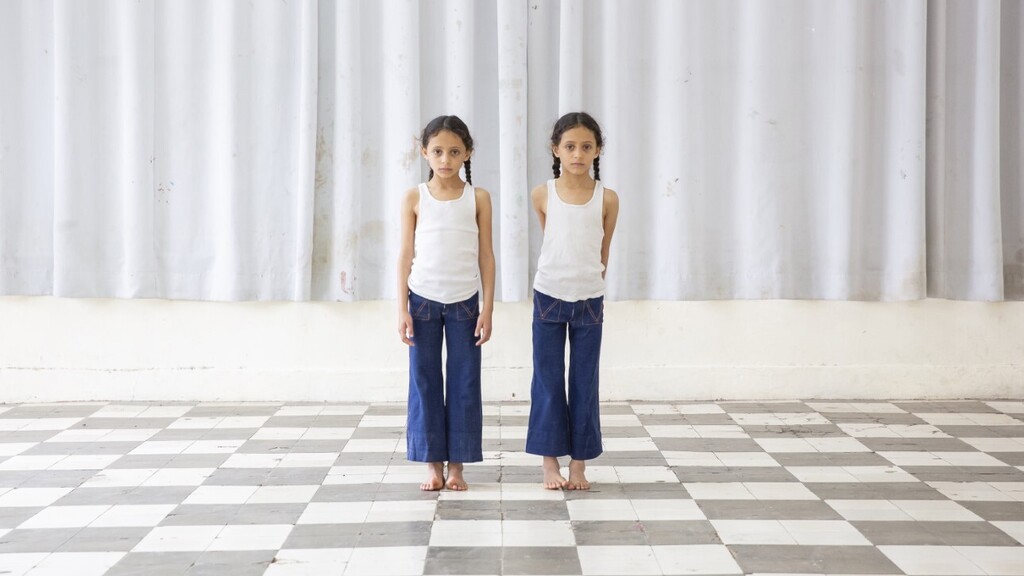

Hillel and Sinai, from the exhibition “Double”
(Photo: Sagit Friedman-Hillel)
Have you had cases where you discovered surprising things about the relationship between the twins?
“It’s always interesting to look at them. Most of them are very connected. Although I do stage photography, it is only partially staged: I bring the twins to the place and I dress them and I tell them to stand in front of me, but that’s it. I do not tell them what to do with the body. “This is where I start looking for the personality of each of them and also the relationships between them. There are couples who hold hands or hold on to each other, without me telling them to do it. There are those where the competition between them is very noticeable.”
Perhaps because of the association with the famous twin scene in Kubrick’s ‘Spark’, it seems like there is sometimes something disturbing about them as well. Is it intentional?
“I raise questions about the emotional and social problems of the places where they are photographed. On the one hand, there is nostalgia in them, and on the other hand, these are places where the ‘I’ has blurred for the children who stayed there. We once looked at living in a kibbutz children’s home as ideal. “The treatment is critical. There is nostalgia but there is also criticism, which is why, for example, I do not photograph them jumping or happy. There is a great vulnerability in this matter that you are just one of many kinds.”
Do you continue filming the series at the same time as the exhibition?
“Yeah. I’m a serial photographer,” she laughs. “I start series but I have never finished one. For me this series can go on and on, and I think over time it will also have more meanings because they will see how these girls grow up. What I have at the moment is not enough to show a representative picture of adolescence.” .